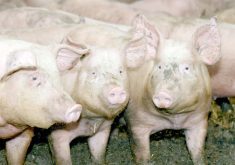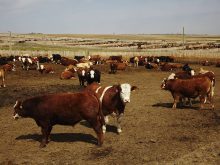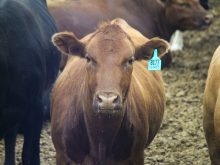A new barley variety that is expected to benefit growers, hog producers and the environment has taken another step on the long road toward full commercialization.
The still formally unnamed variety of two-row hulless feed barley now known only as HB379 was recommended for registration at the recent annual meeting of the Prairie Registration Recommending Committee for Grain.
Once the final stamp of approval is received from the Canadian Food Inspection Agency, it will become the first-ever variety of low phytate hulless barley.
In conventional varieties of barley, about 70 percent of the phosphorus is in the form of phytate or phytic acid.
Read Also

Lending policy still focused on primary producers: Farm Credit Canada
Farm Credit Canada said it has not changed its business practices and remains committed to supporting all producers, after a report from an Ottawa-based media outlet claimed otherwise.
Pigs have difficulty digesting phytate, so most of the phosphorus in the barley ends up in their manure.
“The phosphorus in barley goes in one end and out the other,” said barley breeder Brian Rossnagel of the University of Saskatchewan.
HB379 contains the same amount of phosphorus as other varieties, but has 75 percent less phytate.
“So three-quarters of the phosphorus will be freed up and available for pigs to use and won’t go out in the manure,” said Rossnagel, who led the research team at the university’s Crop Development Centre.
“It has premium value and it’s going to have to carry a premium price, or people aren’t going to grow it, said Rossnagel.
Denise Beaulieu, a researcher at the Prairie Swine Centre in Saskatoon, said anything that helps pigs recover phosphorus from their diet, reduces the need to add dicalcium phosphate and reduces environmental degradation is a positive development.
Feed formulators can reduce phosphorus levels by adding the phytase enzyme to rations. That reduces phosphorus levels in manure by almost 40 percent.
“You could use normal barley plus phytate enzyme or (low phytate) barley without the enzyme and both will be reducing phosphorus excretion into the environment,” she said, as well as saving the expense of adding dicalcium phosphate to the ration.
She said once low phytate barley is available, producers will choose between the two methods based on the costs and benefits of each.
The new barley could also be used for poultry, although poultry producers generally favour feed wheat.
Rossnagel said the new variety compares well agronomically with CDC Freedom, from which it was developed through multiple back-crossing. Its field trial yield is about five percent higher than Harrington, but not on a par with high-yielding feed varieties like CDC Helgason.
The variety has been released for seed production to FarmPure Seeds of Regina.
Rossnagel said more studies will be carried out in the next couple of years to gather more data on the benefits for hog producers.
“We have a done a limited number of feeding trials with our animal science colleagues to verify that it will work,” he said.
“But we need to get larger quantities and put through a whole series of barns full of hogs to make sure it works and analyze the economics.”
He expects certified seed will be available to producers in the spring of 2009.
“You never know, this could die on the vine, but we think we’ve got a good one,” said Rossnagel.














